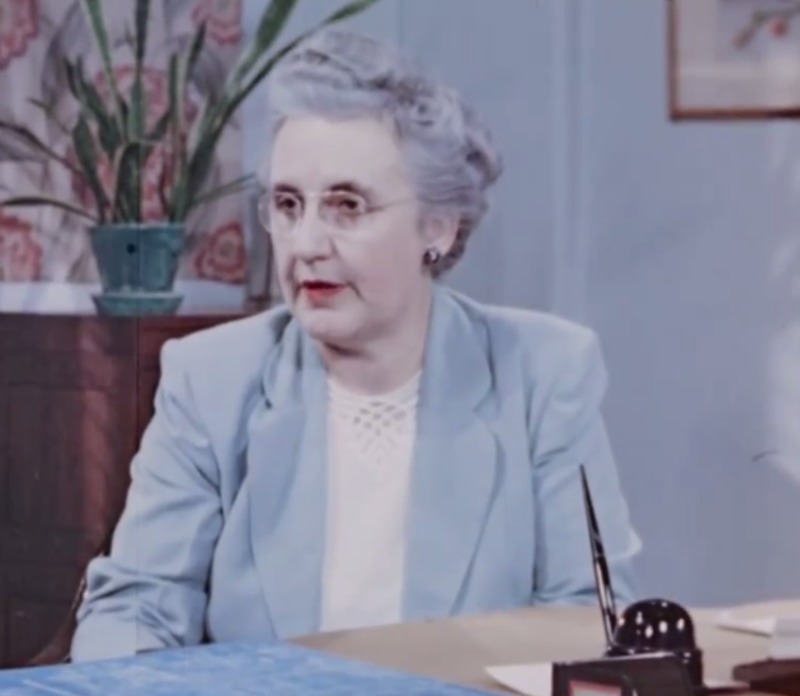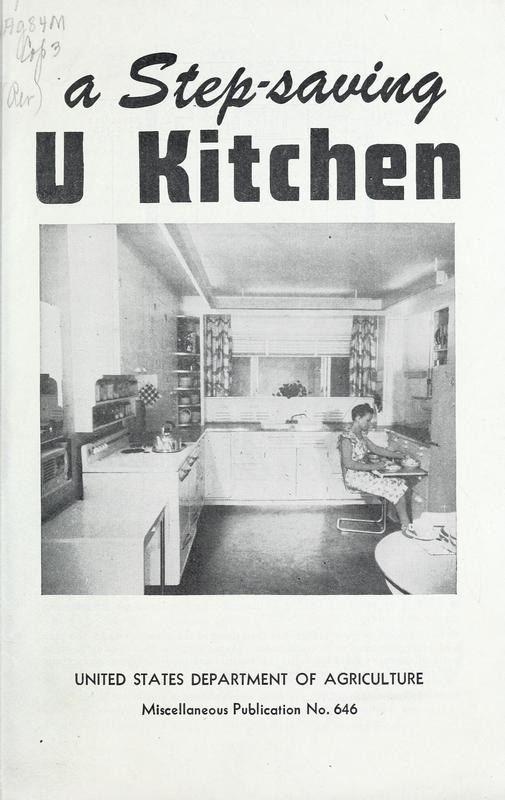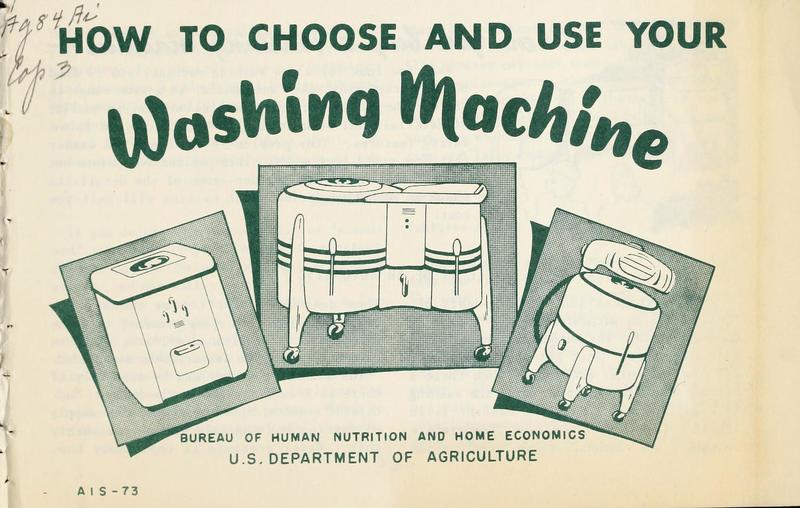The Division of Housing and Equipment: Lenore Sater Thye
Lenore Sater Thye was head of the Bureau's Division of Housing and Household Equipment. She led the investigation into kitchen design and published reports on various devices used in the home.
This portrait is from the documentary, "The Step-Saving Kitchen."
A Step-Saving U Kitchen (1948)
Sater, Lenore E.
U.S. Department of Agriculture. Miscellaneous Publication Number 646
"Maximum convenience for the homemaker at her work is the aim of this step-saving kitchen, planned primarily for the farm home. It was designed in housing and household equipment laboratories of the Bureau of Human Nutrition and Home Economics.
Basic plan. The unbroken U shape was chosen for arranging equipment because it forms a compact dead end work center through which household traffic cannot pass. It also allows the dining corner to be planned and decorated as a separate center.
As shown on the plan (opposite), the sink is at the center of the U, and the refrigerator and range are at the ends. The three key pieces of equipment are brought within easy reach of one another. Other arrangements of the three pieces in a U or an L might be equally convenient.
The U as shown here, while compact, is large enough for two women to work with plenty of space. There is also ample storage t5 accompany the activities usually carried on in a farm kitchen when there is a separate laundry and workroom.
Smooth production line. This kitchen is planned to cut walking, stooping, and stretching to a minimum in accordance with modern work simplification ideas. It is planned so that jobs can progress in orderly fashion from one work center to the next. The production line is from right to left, since most right-handed women prefer this."
A Step-Saving U Kitchen (1949)
U.S. Department of Agriculture. Bureau of Human Nutrition and Home Economics. Thye, Lenore Sater and Dodge, J. Robert
U.S. Department of Agriculture. Miscellaneous Publication Number 646, Slightly revised
"Maximum convenience for the homemaker at her work is the aim of this step-saving kitchen, planned primarily for the farm home. It was designed in housing and household equipment laboratories of the Bureau of Human Nutrition and Home Economics.
Basic plan, — The unbroken U shape was chosen for arranging equipment because it forms a compact dead-end work center through which household traffic cannot pass. It also allows the dining corner to be planned and decorated as a separate center.
As shown on the plan (opposite), the three key pieces of equipment are brought within easy reach of each other — sink at center of U, refrigerator and range at ends. Other arrangements of these pieces in a U or an L might be equally convenient.
The U as shown here, while compact, is large enough to give two women comfortable working space. There is also ample storage to accompany the activities usually carried on in a farm kitchen when there is a separate laundry and workroom.
Smooth production line. — This kitchen is planned to cut walking, stooping, and stretching to a minimum in accordance with modern work-simplification ideas. It is planned so jobs can progress smoothly from one work center to the next. The production line is from right to left, as preferred by most right-handed women."
How To Choose and Use Your Washing Machine (1948)
Sater, V. Enid Sater, Lenore E. Chalmers, and Ruth A. Myers, Lynn
Agriculture Information Series Number 73
"When you look for a new washing machine, you'll find on the market many makes and models, at a wide range in price. They differ in design and appearance, in quality of materials and workman slap, in timesaving and labor-saving features. Your problem is to choose the washer that best meets your needs. This publication points out some of the things to consider-- some of the details to check in order to decide which machine will suit you best."
The Beltsville Kitchen-Workroom With Energy-Saving Features (1958)
Howard, Mildred S. Tayloe, Genevieve K., and Thye, Lenore Sater.
Home and Garden Bulletin Number 60
"This kitchen-workroom was designed primarily for older or physically-handicapped farm women who must conserve their energy. Its many energy-saving features, however, will work equally well for any homemaker.
In planning this kitchen-workroom, the designers have applied findings of studies of the energy expended by women in performing household tasks. They have also taken into account studies of the space required for various household activities.
Storage designs, workspace, and arrangement of equipment are planned so that work can be done with a minimum of walking and other motions.
The overall size of the kitchen-workroom is 17 ½ by 18 feet."
 An official website of the United States government.
An official website of the United States government.






